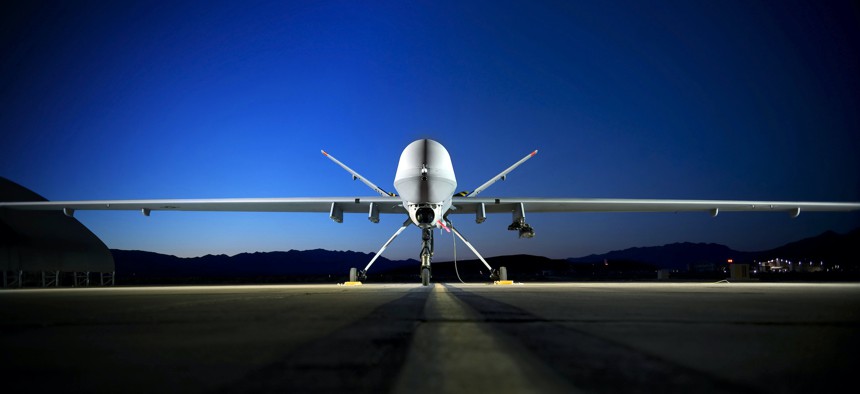PATRICK TUCKER

Early next year, the U.S. military’s Space Development Agency will test whether low-earth orbit satellites can communicate with an MQ-9 Reaper drone via optical links, or lasers.
If the experiment is successful, it will pave the way for a new, less hackable means of communication between drones, jets, and other weapons and commanders and operators from afar.
“In just a few short days, we'll be launching several satellites. Two of those are [MQ-9 maker] General Atomics satellites to be able to do the laser conductivity in space,” Derek Tournear, the head of the Space Development Agency, told Defense One during a taping of a segment to air next week during the Defense One Tech Summit. “Then those satellites will also be able to do the laser conductivity down directly to an MQ-9 platform.”
Satellite communication to drones, ships, and other assets via radio frequency is decades old. It served the military well in places like Iraq and Afghanistan, where the United States did not face adversaries with complex air defenses or the ability to jam radio signals on drones.
But as the military preps for a potential contest against much more high-tech adversaries, radio signals from space present a vulnerability.
“With [radio frequency] you can jam that… if you can just put out a lot of power on the ground and overpower the receiver,” Tournear said. “With optics, with light, it's completely different because...essentially you have a very narrow band...So if you want to jam that signal you actually have to get a light laser that shines directly down into that telescope, so that's extremely difficult to do. It's not technically feasible to be able to do that over a wide area. So that's a big advantage.”
But, Tournear said, optical communication also presents a big advantage over radio in terms of how much data it can transfer and how much power it needs.
“It's very difficult to make sure that you can get a high amount of bandwidth down over [radio frequency.] It takes an incredible amount of power,” Tournear said. The lower you go in frequency on the radio spectrum, the more power you need to put out the signal in order to get the same amount of bandwidth.
The spectrum is also increasingly crowded, with telecom companies eager for whatever they can grab, especially as consumers demand higher data availability on mobile devices.
“There's also licensing issues [with radio frequency]. You can easily start to get interference among a lot of different channels if you start to try to do a lot of broadband communication with radio frequency, so that also limits you,” he said.
Those aren’t problems that exist with laser communication, which could provide “a very high bandwidth, low latency, low probability of jam communication network to be able to go down to any platform, whether it be on the surface, whether it be on a ship, or whether it be on air. So we're really excited that that opens up a completely new way to move data so that we can start to enable the warfighter,” Tournear said.
No comments:
Post a Comment